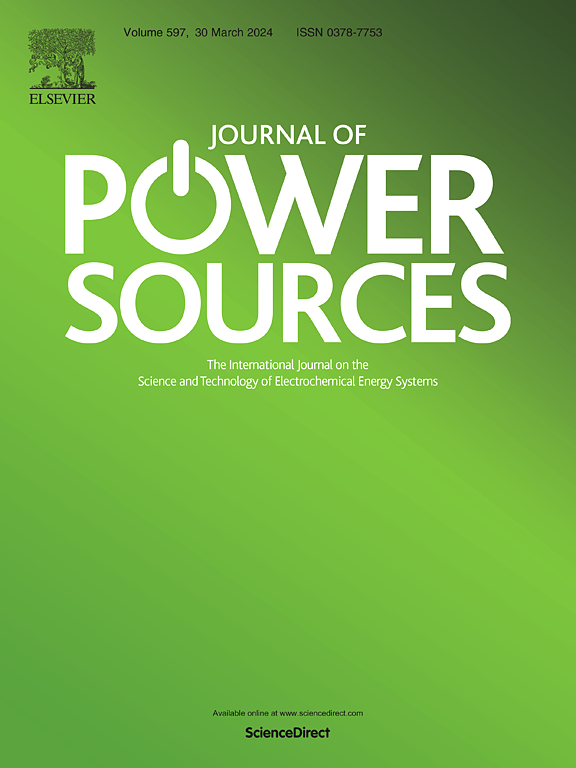A state of health estimation method for lithium-ion batteries based on initial charging segment and Gated Recurrent Unit neural network
IF 8.1
2区 工程技术
Q1 CHEMISTRY, PHYSICAL
引用次数: 0
Abstract
With the recent shortage of fossil energy and the escalating severity of environmental issues, electrochemical energy storage has emerged as a developing field. The widely used lithium-ion battery (LIB) is renowned for its exceptional performance. However, its safety concerns have garnered increasing attention. Accurate prediction of the state of health (SOH) of LIBs is crucial in mitigating safety accidents. In this study, the SOH of LIBs is predicted by selecting the initial charging segment data as features of a deep learning NN processed using dQ/dV. The processing results provide insights into the phase transformation process and aging information of both anode and cathode materials, which exhibit strong correlations with the aging behaviour of LIBs. Gated Recurring Unit (GRU) are then used to estimate SOH of LIBs. After applying dQ/dV processing to the data, the determination coefficients R2 for complete charging segments in three datasets increase from 0.79, 0.47, and 0.83 to 0.96, 0.97, and 0.99, respectively. By replacing Long Short-Term Memory (LSTM) with GRU, R2 values for the first 2 min of dataset 1 and dataset 2 improve from 0.32 to 0.37 to 0.93 and 0.80, which means that the use of GRU can substantially improve the prediction accuracy even though the data segment coverage time is short. This approach not only improves the estimation accuracy, but makes the entire work more interpretable and possible for application.
求助全文
约1分钟内获得全文
求助全文
来源期刊

Journal of Power Sources
工程技术-电化学
CiteScore
16.40
自引率
6.50%
发文量
1249
审稿时长
36 days
期刊介绍:
The Journal of Power Sources is a publication catering to researchers and technologists interested in various aspects of the science, technology, and applications of electrochemical power sources. It covers original research and reviews on primary and secondary batteries, fuel cells, supercapacitors, and photo-electrochemical cells.
Topics considered include the research, development and applications of nanomaterials and novel componentry for these devices. Examples of applications of these electrochemical power sources include:
• Portable electronics
• Electric and Hybrid Electric Vehicles
• Uninterruptible Power Supply (UPS) systems
• Storage of renewable energy
• Satellites and deep space probes
• Boats and ships, drones and aircrafts
• Wearable energy storage systems
 求助内容:
求助内容: 应助结果提醒方式:
应助结果提醒方式:


